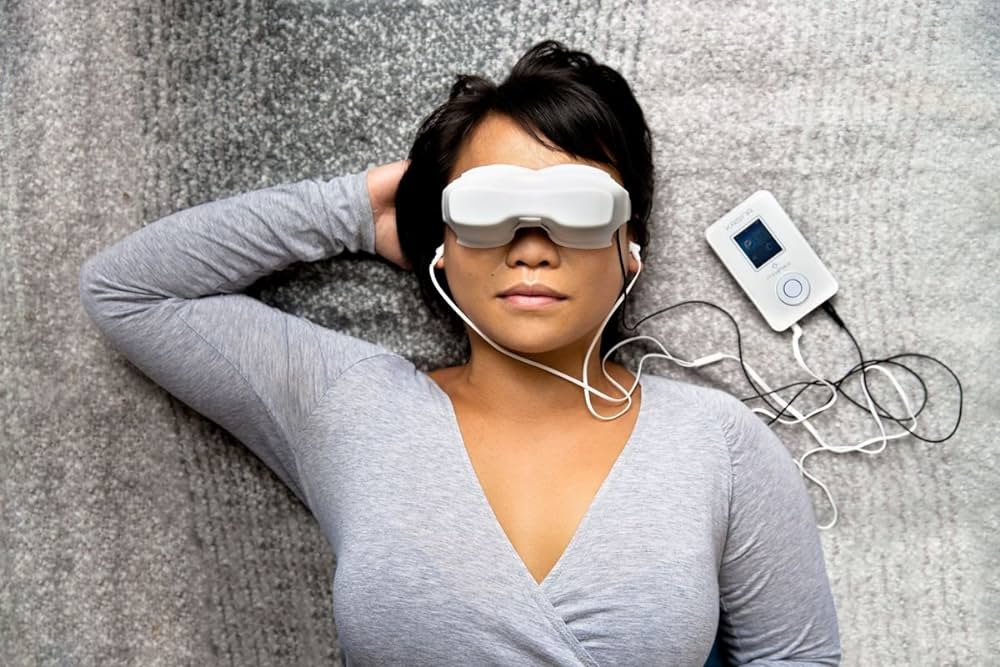The Ganzfeld effect is a phenomenon of perception caused by exposure to an unstructured, uniform stimulus field. This effect is often induced using Ganzfeld effect goggles, which create a visual environment of homogenous and featureless light. These goggles are used in various fields, from psychology experiments to sensory deprivation therapies and even in artistic practices. In this article, we will explore what Ganzfeld effect goggles are, how they work, their impact on human perception, and their applications.
What Are Ganzfeld Effect Goggles?
Ganzfeld effect goggles are specialized devices designed to create a uniform visual field that lacks any distinct features. The term “Ganzfeld” comes from German and means “complete field.” When wearing these goggles, individuals are exposed to a seamless field of light, typically white or softly colored, which eliminates all visual patterns and edges.
Components of Ganzfeld Effect Goggles
- Lenses: The goggles usually have lenses made from frosted glass or plastic, which diffuse light evenly.
- Light Source: A uniform light source, such as LEDs, is used to illuminate the lenses.
- Frame: The frame holds the lenses and light source in place, ensuring a snug fit to block out external visual stimuli.
How They Are Made
Ganzfeld effect goggles can be made using simple materials. Commonly, a ping-pong ball cut in half and placed over the eyes is used to achieve the effect. However, more sophisticated versions use custom-made lenses and integrated lighting systems.
How Do Ganzfeld Effect Goggles Work?
The principle behind Ganzfeld effect goggles lies in their ability to create a visual field devoid of any patterns or edges. When the eyes are exposed to such a uniform field, the brain struggles to process the information due to the lack of visual stimuli. This often results in visual and auditory hallucinations, as the brain attempts to make sense of the sensory deprivation.
The Science Behind the Effect
- Sensory Deprivation: The goggles create a state of sensory deprivation by blocking out all external visual stimuli.
- Brain’s Response: In the absence of visual information, the brain starts to amplify internal noise, leading to hallucinations.
- Perceptual Changes: Prolonged exposure can lead to significant changes in perception, such as altered sense of time and space.
Experimental Observations
In psychological experiments, participants wearing Ganzfeld effect goggles often report seeing shapes, colors, and patterns that aren’t present. These experiences are attributed to the brain’s attempt to fill the sensory void.
Applications of Ganzfeld Effect Goggles
Ganzfeld effect goggles have various applications across different fields. Their ability to induce hallucinations and alter perception makes them valuable tools in psychological research, sensory deprivation therapy, and even artistic exploration.
Psychological Research
- Studying Hallucinations: Researchers use these goggles to study the nature and mechanisms of hallucinations.
- Exploring Perception: Experiments with Ganzfeld effect goggles help scientists understand how the brain processes sensory information.
Sensory Deprivation Therapy
- Relaxation and Meditation: The goggles are used in sensory deprivation tanks to enhance relaxation and meditation experiences.
- Therapeutic Uses: Some therapies use sensory deprivation to help individuals with anxiety and stress disorders.
Artistic Practices
- Creative Exploration: Artists use Ganzfeld effect goggles to explore new creative processes and perspectives.
- Immersive Experiences: In immersive art installations, these goggles can be used to create unique sensory experiences for participants.
How to Use Ganzfeld Effect Goggles
Using Ganzfeld effect goggles is relatively straightforward. However, it is essential to follow specific steps to ensure a safe and effective experience.
Step-by-Step Guide
- Preparation: Choose a quiet, dimly lit environment to minimize external distractions.
- Wearing the Goggles: Place the goggles over your eyes, ensuring they fit snugly and block out all external light.
- Relaxation: Sit or lie down in a comfortable position. Close your eyes initially to adjust to the sensation.
- Duration: Start with short sessions (5-10 minutes) and gradually increase the duration as you become more comfortable with the experience.
- Observation: Pay attention to any visual or auditory hallucinations and note your experiences.
Safety Tips
- Duration: Avoid prolonged use initially to prevent discomfort or disorientation.
- Environment: Ensure you are in a safe environment where you can relax without interruptions.
- Supervision: If using the goggles for the first time, it may be helpful to have someone nearby to assist if needed.
Potential Risks and Considerations
While Ganzfeld effect goggles can provide fascinating insights into human perception, it is essential to be aware of potential risks and considerations.
Psychological Effects
- Hallucinations: While often harmless, hallucinations induced by the goggles can be disturbing for some individuals.
- Anxiety: Sensory deprivation can sometimes lead to feelings of anxiety or panic, particularly in individuals with pre-existing conditions.
Physical Discomfort
- Eye Strain: Prolonged use may cause eye strain or discomfort.
- Disorientation: Some users may feel disoriented or dizzy after using the goggles.
Guidelines for Safe Use
- Gradual Exposure: Start with short sessions and gradually increase the duration.
- Monitor Reactions: Pay attention to your physical and emotional reactions and stop if you feel uncomfortable.
- Consult a Professional: If you have a history of mental health issues, consult a professional before using Ganzfeld effect goggles.
Conclusion
Ganzfeld effect goggles offer a unique way to explore the fascinating world of sensory perception. By creating a uniform visual field, they induce hallucinations and alter our sense of reality, providing valuable insights for researchers, therapists, and artists alike. Whether used for scientific experiments, therapeutic purposes, or artistic exploration, these goggles demonstrate the incredible adaptability and complexity of the human brain. As with any tool that alters perception, it is crucial to use Ganzfeld effect goggles responsibly and be aware of the potential risks and benefits.
By understanding how Ganzfeld effect goggles work and their impact on our perception, we can better appreciate the intricate workings of the human mind and the endless possibilities for exploring and enhancing our sensory experiences



